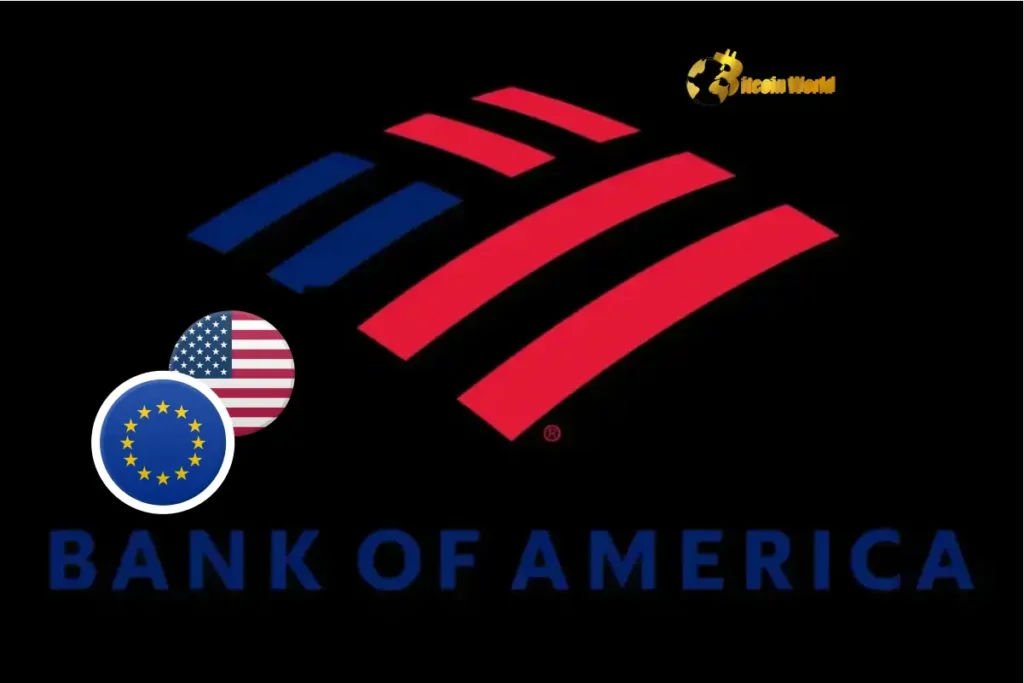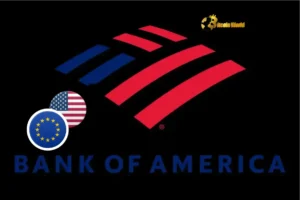Corporate Hedging: BofA Issues Crucial Warning on Rising EUR/USD Risk

BitcoinWorld
Corporate Hedging: BofA Issues Crucial Warning on Rising EUR/USD Risk
In the dynamic world of global finance, shifts in major currency pairs like EUR/USD can have ripple effects that extend even to the realm of digital assets. While cryptocurrencies often operate independently, they exist within a larger economic ecosystem influenced by macro trends. A recent observation from Bank of America (BofA) highlights one such trend: a potential increase in corporate hedging activity specifically related to the EUR/USD pair. This development, detailed in a recent BofA report, signals evolving strategies by businesses to manage foreign exchange exposure, a factor that savvy market watchers across all asset classes, including crypto, should understand.
What is Corporate Hedging and Why Does it Matter?
At its core, corporate hedging is the practice by which companies mitigate their exposure to financial risks, particularly those arising from fluctuations in exchange rates, interest rates, or commodity prices. For businesses operating internationally, dealing with multiple currencies is standard. Imagine a European company selling goods in the United States. The revenue is in U.S. dollars (USD), but the company’s costs and reporting currency are in Euros (EUR). If the EUR/USD exchange rate moves unfavorably between the time of the sale and when the USD revenue is converted back to EUR, the company could lose money.
This is where currency hedging comes in. By using financial instruments like forward contracts, options, or futures, companies can lock in a specific exchange rate for a future transaction or protect themselves against adverse rate movements. This provides predictability and stability in financial planning, allowing businesses to focus on their core operations without being overly vulnerable to the whims of the Forex market.
Why is this important? Unmanaged currency risk can significantly impact a company’s profitability, cash flow, and even its competitive position. Large, multinational corporations are particularly active in hedging due to the volume and complexity of their international transactions. Their actions, collectively, can influence market dynamics.
Decoding the BofA Report: Why More EUR/USD Hedging Now?
The recent BofA report points to specific factors suggesting an uptick in EUR/USD hedging. While the exact drivers are multifaceted, they generally revolve around increased volatility and divergence in economic outlooks and monetary policies between the Eurozone and the United States.
Key potential drivers highlighted or implied by such a report could include:
Monetary Policy Divergence: Differences in how the European Central Bank (ECB) and the U.S. Federal Reserve (Fed) approach interest rates and quantitative easing/tightening can create significant shifts and uncertainty in the EUR/USD rate. Companies with exposure need to protect against these potential swings.
Economic Outlook Differences: Varied growth forecasts, inflation rates, and recession risks between the two major economic blocs create uncertainty about future currency valuations.
Geopolitical Factors: Global events, from political elections to international conflicts, can disproportionately impact different regions, adding another layer of unpredictability to the EUR/USD pair.
Increased Corporate Activity: A general rise in cross-border trade, mergers, or acquisitions between the Eurozone and the U.S. naturally leads to more underlying currency exposure that needs hedging.
The report likely analyzes data points such as corporate treasury surveys, derivatives market activity, and macroeconomic indicators to arrive at its conclusion about potential increased hedging flows. Understanding the ‘why’ behind this trend is crucial for appreciating its potential impact on the Forex market.
Navigating Currency Risk: Challenges and Strategies
Managing currency risk is not without its challenges. While hedging provides protection, it also comes with costs, such as premiums for options or potential opportunity costs if the exchange rate moves favorably *against* the hedged position. Furthermore, choosing the right hedging strategy requires expertise and a clear understanding of the company’s specific exposures and risk tolerance.
Common strategies for EUR/USD hedging include:
Forward Contracts: Locking in an exchange rate for a specific amount on a future date. This offers certainty but removes the possibility of benefiting from favorable rate movements.
Currency Options: Giving the holder the right, but not the obligation, to buy or sell a currency pair at a specific rate (the strike price) on or before a certain date. This offers flexibility but requires paying a premium.
Natural Hedging: Matching revenues and expenses in the same currency where possible, reducing the need for financial instruments.
The decision to increase corporate hedging signals that, from the perspective of firms and potentially their banking advisors like BofA, the perceived benefits of protection currently outweigh the costs and complexities, given the current market environment for the EUR/USD pair.
Potential Impact on the Forex Market
Increased EUR/USD hedging activity from large corporates can have tangible effects on the spot and derivatives markets. When many companies rush to hedge in the same direction (e.g., buying EUR forward to protect against USD depreciation), it can create significant order flow. This concentrated demand or supply for hedging instruments can influence forward points and potentially even spill over into the spot market, affecting the actual EUR/USD exchange rate.
While corporate hedging is typically about risk management rather than speculation, the sheer volume of corporate flows can become a notable factor in market dynamics, especially during periods of low liquidity or heightened sensitivity to news. Traders and investors in the Forex market pay close attention to these flows as they can provide clues about market sentiment and potential price pressures.
Furthermore, the demand for specific hedging products like currency options can impact volatility surfaces and pricing in the options market, providing additional data points for sophisticated traders.
Actionable Insights for Businesses and Investors
For businesses with EUR/USD exposure, the potential rise in hedging flagged by the BofA report serves as a timely reminder to review their own currency risk management policies. Key actions include:
Assess Exposure: Quantify current and future transaction and translation exposure to the EUR/USD rate.
Review Policy: Evaluate whether the current hedging policy is adequate given the prevailing market volatility and outlook.
Explore Strategies: Consider the range of available hedging instruments and determine which best fit the company’s risk profile and objectives.
Seek Expertise: Consult with treasury professionals or financial institutions to implement or refine hedging programs.
For investors, particularly those with interests in global markets or even indirectly exposed through investments in multinational corporations or asset classes sensitive to macro trends (like potentially crypto in certain scenarios), understanding these shifts in corporate behavior and their drivers is key to a holistic market view. Increased hedging suggests market participants anticipate continued or increased volatility in the EUR/USD pair, which is valuable context.
Conclusion: Why BofA’s Warning Matters
The signal from Bank of America regarding a potential increase in EUR/USD hedging by corporates is more than just a technical observation for currency traders. It reflects a broader concern among international businesses about managing currency risk in an uncertain economic environment. This heightened focus on protection, driven by factors likely detailed in the BofA report, underscores the ongoing volatility in the Forex market and the proactive steps companies are taking to safeguard their financial health.
For anyone navigating the complexities of global finance, whether involved in traditional markets or newer asset classes, paying attention to such reports provides valuable insights into the underlying currents shaping liquidity, volatility, and risk perception across the financial system. Understanding the motivations behind increased corporate hedging helps build a more complete picture of the economic landscape.
To learn more about the latest Forex market trends, explore our article on key developments shaping EUR/USD liquidity.
This post Corporate Hedging: BofA Issues Crucial Warning on Rising EUR/USD Risk first appeared on BitcoinWorld and is written by Editorial Team







